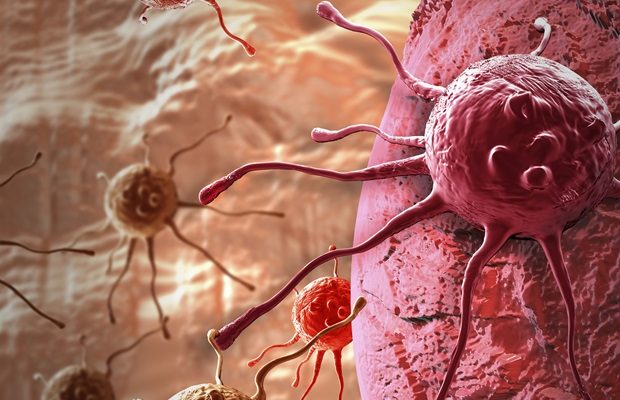Inherited mutations in the BRCA1 gene can significantly increase a person's risk of breast and ovarian cancer-;but not every mutation in the gene is harmful. To better equip patients and their doctors to understand and manage individual cancer risk, researchers from Huntsman Cancer Institute have evaluated how hundreds of different mutations impact a key function of the BRCA1 protein.
In a study published June 2, 2022, in the American Journal of Human Genetics, Sean Tavtigian, PhD, Huntsman Cancer Institute researcher and University of Utah (U of U) professor of oncological sciences, explains that this information can be used to assess the clinical significance of each of those mutations-;only a fraction of which they found to cause disease.
Genetic testing can determine whether a person carries a mutation within the BRCA1 gene that is known to increase cancer risk. Those who do may need more frequent cancer screening than is recommended for people of average risk. They may also consider prophylactic surgery or chemoprevention to reduce their risk. But when testing reveals a variant of unknown significance, patients and clinicians lack the information they need to guide such decisions.
"There are tens of thousands of patients with unclassified variants in BRCA1," says Tavtigian, who led the new study. Many of these, he says, cause subtle changes to the BRCA1 protein, altering just one of the nearly 2,000 amino acids from which it is constructed. Some of these changes-;known as missense substitutions-;interfere with BRCA1's ability to do its work and increase the likelihood that cancer will develop. Others do not.
With laboratory tests, computational analyses, and clinical data, researchers are teasing out the impacts of these mutations.
We are reaching the point where we should be able to classify all possible missense substitutions in BRCA1 over the course of the next few years."
Sean Tavtigian, PhD, Huntsman Cancer Institute researcher and University of Utah (U of U) professor of oncological sciences
That information will improve doctors' ability to assess their patients' risk of developing cancer based on genetic testing. His team's new work moves researchers closer to that goal.
To evaluate a large set of potential missense mutations, Tavtigian and his colleagues zeroed in on a critical region of BRCA1: the segment the protein needs to interact with an essential partner, BARD1. Nearly 600 different missense substitutions can occur within this region. Tavtigian's team made versions of BRCA1 with each of them and tested how efficiently they bound to BARD1 inside human cells grown in the lab.
Because BRCA1 can't function if it cannot bind to BARD1, the team was able to use the results of this lab test to score the likelihood that each missense substitution would increase a carrier's cancer risk. Using a mathematical, point-based system that Tavtigian's team had previously developed, they determined that 89% of the missense substitutions were either benign, likely benign, pathogenic, or likely pathogenic-;categories recommended by the American College of Medical Genetics (ACMG) for the evaluation of variants in disease-associated genes. Fewer than 20% of the missense mutations the team tested were found to be pathogenic, and just a fraction of the mutations remained in the uncertain significance category.
Data from hundreds of thousands of people with and without cancer were used to validate the findings and confirm that BRCA1's interactions with BARD1 in their laboratory tests were a reliable indicator of the mutations' likelihood to cause disease.
Tavtigian notes that the scores his team calculated for each mutation's likelihood of pathogenicity are easily converted into the discrete categories used by the ACMG, but he encourages researchers to adopt a more quantitative approach. He says the statistics-based method, which can be applied to variants in any disease-associated gene and requires no sophisticated computational tools, more rigorously categorizes a mutation's potential impact. Ultimately, that will convey valuable information to help clinicians understand how patients' personal genetics may impact their health.
Tavtigian recognizes critical contributions by other Huntsman Cancer Institute scientists, including Jason Gertz, Katherine Varley, Kenneth Boucher, David Goldgar, and Alun Thomas, PhD, along with additional colleagues, the U of U School of Medicine, the Lady Davis Institute for Medical Research in Montreal, and McGill University in Montreal. The research was funded by the National Institutes of Health and the Canadian Institutes of Health Research.
Huntsman Cancer Institute at the University of Utah
Clark, K.A., et al. (2022) Comprehensive evaluation and efficient classification of BRCA1 RING domain missense substitutions. American Journal of Human Genetics. doi.org/10.1016/j.ajhg.2022.05.004.
Posted in: Medical Research News | Women's Health News
Tags: Cancer, Cell, Education, Gene, Genes, Genetic, Genetics, Healthcare, Hospital, Laboratory, Medical Research, Medicine, Melanoma, Mutation, Neck, Ovarian Cancer, Protein, Proton Therapy, Research, students, Surgery
Source: Read Full Article
